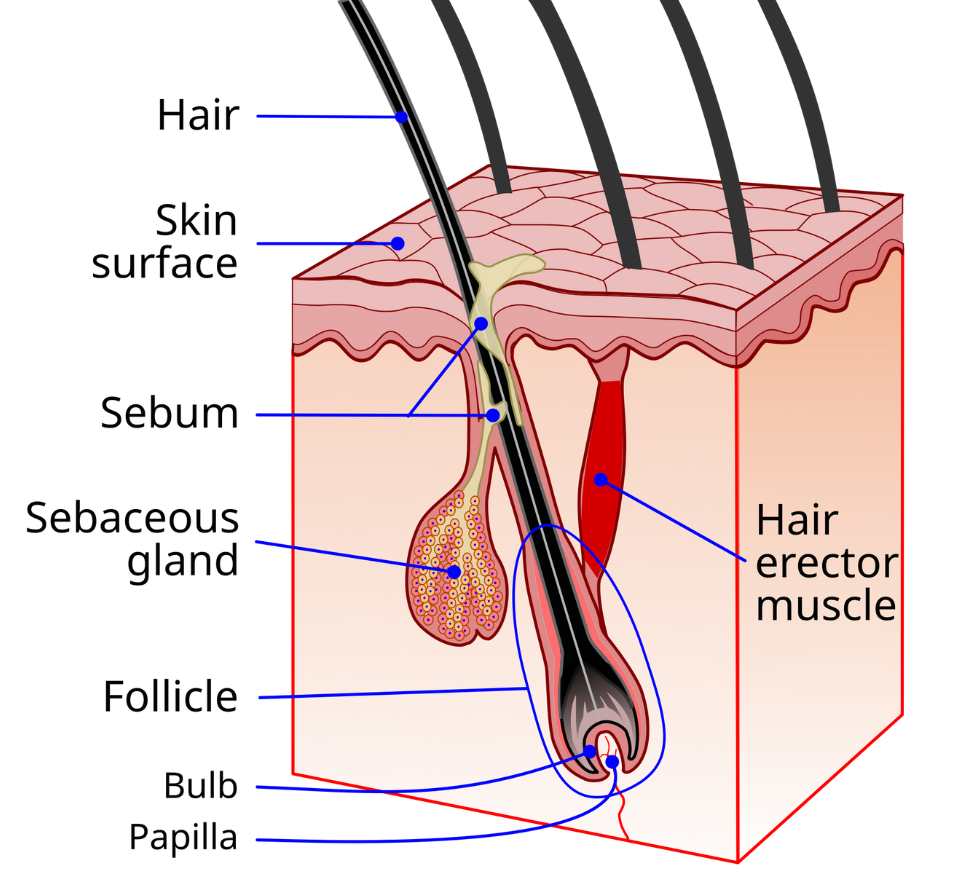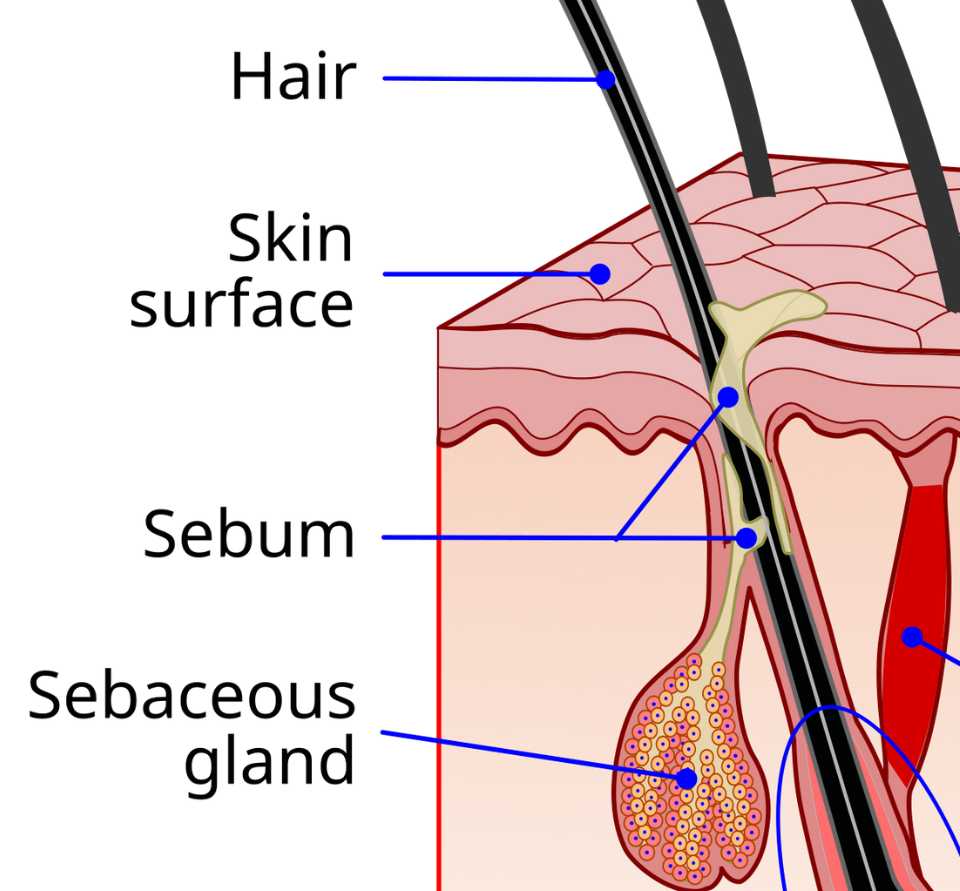Learn About Sebum: Your Skin’s Natural Oil
What is Sebum? A Quick Overview
Sebum is an oily substance made by the sebaceous glands in your skin. It helps moisturise and protect your skin. Sebum is also the main component of your skin’s natural oils.
Sebaceous glands are tiny glands found throughout the skin, except for the palms and soles of the feet. They secrete sebum to lubricate and waterproof the skin and hair. The glands are part of the hair follicles.
Sebum has several important functions. It keeps skin flexible and prevents water loss. It also has antimicrobial properties to protect against infections. Sebum may also carry antioxidants to the skin’s surface.
The amount and composition of sebum varies between people. It’s influenced by age, diet and environment. Too much sebum can lead to oily skin and contribute to acne. Too little can cause dry, cracked skin.


Basic Functions of Sebum
What does sebum actually do for our skin? Let’s check out its key roles.
1. Moisturising and Protection
Sebum is key in keeping your skin moist and flexible. It creates a barrier on the skin, preventing too much water loss. This helps keep your skin moist and resilient.
2. Barrier Against External Elements
Sebum forms an oily layer on your skin. This layer shields your skin from external factors like pollution, dust, and harmful germs. It’s vital for keeping your skin healthy and intact.
3. Antimicrobial Properties
Sebum has ingredients that fight off certain bacteria and fungi. This is important for preventing infections and keeping a healthy balance of skin microorganisms.
4. Antioxidant Properties
Ingredients in sebum, like squalene, have antioxidant properties. These help shield your skin from oxidative damage from things like pollution and smoke. This protects against premature ageing and other problems.
5. pH Balance
Sebum helps keep the surface of your skin slightly acidic. This acidity makes it harder for harmful microbes to survive. It also supports many important skin barrier functions.
Why Sebum Matters
Sebum is key for healthy skin – not just an oily secretion. It moisturises and protects. This makes it essential for balanced skin.
Getting the right sebum balance is critical, though. Too much can lead to oily skin and acne. Too little may result in dry, irritated skin.
In short, ebum is complex and vital for the skin. It protects from environmental damage. It prevents dehydration. It maintains balance with natural skin microbes. The right sebum production is key for resilient, healthy skin.
How Sebum is Made
Sebum production is key for healthy skin. Small glands in the skin called sebaceous glands make sebum.
Sebaceous glands are found all over the skin except palms and soles. Most are on the face, scalp and upper body. The glands sit next to hair follicles.
About the Sebaceous Glands
Inside the sebaceous glands, cells called sebocytes produce sebum. They make sebum out of fats and skin cell debris. The sebocytes fill up with sebum and then break.
This releases sebum into the hair follicles and flows out onto the skin.
What Affects Sebum Levels
Hormones
Androgens like testosterone stimulate glands and boost sebum production. This causes more oily skin in puberty, which can lead to acne outbreaks.
Age
Sebum production is low in childhood, then peaks in adulthood. After menopause in women, it decreases again, sometimes causing dryness.
Body Areas
More sebaceous glands on the face and scalp make them oilier than other areas.
Individual Differences
Genetics, diet and health cause variation from person to person. Some naturally have oily skin, while others are prone to dryness.
Sebum Levels Over Time
Childhood – Sebum production is low.
Teens – Hormone changes during puberty increase sebum. This can lead to oily skin and acne.
Adulthood – Sebum production is usually steady, but stress, hormones and lifestyle impact it.
Ageing – Production slows down, leading to dry, sensitive skin.
Main Components of Sebum
Sebum contains many substances that benefit the skin.
Its exact composition varies from person to person* based on genes, diet and environment.
Lipids
Lipids make up most of the sebum. Types of lipids in sebum include:
- Triglycerides & Fatty Acids – Help keep skin hydrated and the skin barrier healthy.
- Wax Esters – Give sebum its texture. Prevent moisture loss and keep skin flexible.
- Squalene – A unique antioxidant that protects the skin from damage.
- Cholesterol – A small component that contributes to the skin barrier.
Proteins and Other Components
Sebum also contains small amounts of proteins, which may play roles in the skin’s immune function and structural integrity.
*Sebum Can Vary from Person to Person
Sebum composition is different for everyone. Main factors that cause variation:
Genetics – Genes impact the types of lipids made. This affects skin types like oily, dry or combination.
Hormones – Hormones like androgens can increase oil production and alter lipid balance.
Age – Sebum changes over time. Typically, it becomes waxier and higher in cholesterol as we age.
Other Things that Affect Sebum
Diet – Diets high in saturated fats or high glycemic foods may boost sebum output and change its makeup.
Environment – Humidity increases sebum production. Pollution can alter the types of lipids in sebum.
Products & Medications – Skincare and hormonal medications also impact composition.
Sebum and Skin Conditions
Imbalances in sebum production can significantly affect skin health, leading to various skin conditions. Understanding the link between sebum and these conditions is crucial for effective management and treatment.
Too Much Sebum Can Cause Acne
Extra sebum can clog pores with dead cells and bacteria. This causes pimples, blackheads, etc. Bacteria like Propionibacterium acnes can then trigger more inflammation.
Helping Acne
- Topicals – Salicylic acid, benzoyl peroxide, and retinoids clear pores and reduce inflammation.
- Oral Medications – For severe acne, antibiotics or birth control can help.
- Lifestyle Changes – Balanced diets, good hydration and skin hygiene assist.
Too Little Sebum Can Cause Dry Skin
Without enough sebum, skin loses moisture. This damages the skin barrier. It can lead to irritation, sensitivity and damage.
Caring for Dry Skin
- Moisturisers – Hyaluronic acid, glycerin and ceramides replenish moisture.
- Gentle Cleansing – Avoid harsh soaps. Use gentle, hydrating cleansers.
- Environment – Humidifiers in dry climates and protection from temperature extremes.
Other Problems
Oily Skin – Overactive glands lead to a greasy complexion. Regular gentle cleansing helps. Non-comedogenic products are less likely to clog pores.
Seborrheic Dermatitis – Scaly, red skin patches form, usually on the scalp. Caused by excess sebum and yeast on the skin.
Caring for Your Skin
Appropriate skincare routines, lifestyle choices, and environmental considerations can significantly impact sebum production and its effects on the skin.
1. Skincare Tips
- Gentle Cleansing: Use a gentle cleanser to remove excess oil and impurities without stripping the skin. Overwashing can worsen oiliness by stimulating more sebum production.
- Moisturize Regularly: Even for oily skin, a non-comedogenic (won’t clog pores) moisturizer is important to maintain the skin’s natural barrier.
- Exfoliation: Regular, but not excessive, exfoliation helps to remove dead skin cells that can clog pores, but should be done gently to avoid irritating the skin.
- Use of Sunscreen: Protecting the skin from the sun helps prevent damage, which can affect sebum production and overall skin health.
- Choose Products Wisely: Select skincare products based on your skin type. For oily skin, look for terms like “oil-free” or “non-comedogenic”.
2. Lifestyle Choices
- Diet: A balanced diet rich in fruits, vegetables, whole grains, and lean proteins can promote healthier skin. Limiting high-glycemic and dairy foods may help manage sebum production in some people.
- Hydration: Drinking plenty of water helps maintain skin hydration and overall health.
- Avoid Smoking: Smoking can affect the skin’s appearance and sebum production, leading to skin issues.
3. Stress Management
- Regular Exercise: Physical activity can improve circulation and help manage stress, which in turn can positively affect skin health.
- Stress Reduction Techniques: Practices like yoga, meditation, and mindfulness can reduce stress, which is known to impact sebum production.
4. Environmental Considerations
- Climate and Humidity: Be mindful of your skincare routine in different climates. More moisturizing may be needed in dry climates, while in humid conditions, lighter products may be preferable.
- Pollution Protection: In high-pollution areas, regular cleansing and the use of antioxidants in skincare can help protect against environmental damage.
5. Regular Skin Check-Ups
- Consult with Dermatologists: Regular check-ups with a dermatologist can provide personalized advice and early treatment of any skin issues.
Frequently Asked Questions (FAQs) about Sebum
How can I tell if my skin is oily or dry?
- Oily Skin: Typically has a shiny or greasy appearance, larger visible pores, and may be prone to acne and blackheads.
- Dry Skin: Often feels tight or rough, may appear flaky or scaly, and is less prone to acne but more prone to irritation and redness.
How do hormones impact sebum production?
Hormones, particularly androgens, significantly influence sebum production. During puberty, hormonal changes can increase sebum production, leading to oilier skin and acne. Similarly, hormonal fluctuations during menstrual cycles, pregnancy, or menopause can affect sebum levels.
Is it possible to change your skin type?
While you can’t change your skin type, which is largely determined by genetics and hormones, you can manage and improve your skin’s condition. Skincare routines, lifestyle choices, and environmental factors can all contribute to the health of your skin, making it appear more balanced.
Summary
Sebum, the natural oil produced by the skin, plays a crucial role in maintaining skin health and integrity. It moisturises the skin, protects against environmental damage, and has antimicrobial properties.
The balance of sebum production is essential; both excess and insufficient production can lead to skin problems such as acne and dry skin, respectively.
Understanding sebum’s functions and managing its production through appropriate skincare, diet, and lifestyle choices are key to maintaining healthy skin.
References and Further Reading
For further exploration of sebum and skin health, the following resources can be invaluable:
- Scientific Studies and Journals:
- Websites and Articles:
